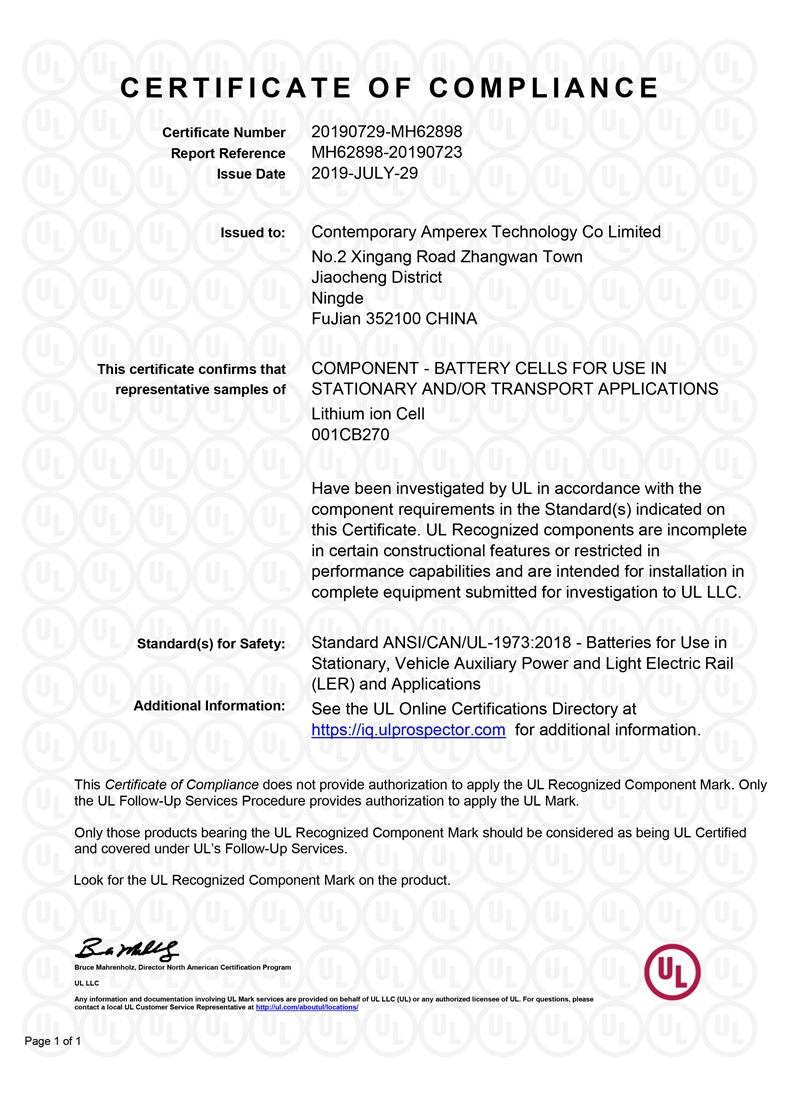Blog
Differences Between Power Battery and Energy Storage Battery
2025-08-29 | Calvin

Are you wondering when to pick a power-oriented cell and when to choose an energy-focused cell? They may look similar, but they’re optimized for very different jobs — one for short, intense bursts of current, the other for holding lots of energy over time. Below we break the differences down in plain English, show typical chemistries and use cases, and give practical tips so you pick the right technology for your needs.
Table of Contents
- Part 1. What is a power battery?
- Part 2. What is an energy-storage battery?
- Part 3. Core technical differences (quick comparison)
- Part 4. Use cases & application guidance
- Part 5. How to choose the right battery for your project
- Part 6. FAQs
Part 1. What is a power battery?
A power battery (or high-power cell) is engineered to supply large currents quickly. It’s built with low internal resistance so it can discharge high power without large voltage sag — ideal when you need instant torque, bursts of energy, or repeated high-current pulses. Think EV acceleration, power tools, or launch/boost systems.
Key traits
- Optimized for high power density (W/kg).
- Fast charge/discharge (high C-rate).
- Lower gravimetric/volumetric energy than high-energy cells.
- Often trades some cycle life or nominal capacity for power performance.
Common chemistries
- Lithium-ion variants optimized for power (e.g., some spinel or tailored LFP formulations).
- NiMH in some portable/high-cycle applications.
Part 2. What is an energy-storage battery?
An energy-storage battery (high-energy cell) is optimized to store as many watt-hours as possible per unit weight or volume. It’s built for sustained discharge and longer runtime rather than instantaneous high current. Typical applications include home/utility storage, long-range EV packs, and backup power.
Key traits
- High energy density (Wh/kg or Wh/L).
- Slower discharge capability relative to power cells (lower C-rate).
- Designed for longer cycle life and stable energy throughput.
- Often paired with BMS/controls for long-term reliability in grid or residential systems.
Common chemistries
- LFP and other Li-ion variants for long life and safety.
- Lead-acid for cost-sensitive, stationary backup systems.
- Flow batteries (vanadium, etc.) for very long duration/grid scale.
Part 3. Core differences — at a glance
| Aspect | Power Battery | Energy-Storage Battery |
|---|---|---|
| Primary goal | Deliver high current / power quickly | Store large energy for long durations |
| Metric emphasized | Power density (W/kg), high C-rate | Energy density (Wh/kg), long duration |
| Charge/discharge | Fast, frequent pulses | Slower, sustained discharge |
| Typical lifespan tradeoff | May age faster under heavy cycling | Designed for many cycles and long calendar life |
| Typical uses | EV propulsion bursts, drills, hybrid boost | Solar storage, UPS, long-range EV packs, grid storage |
| Typical chemistries | Power-optimized Li-ion variants, NiMH | LFP, high-energy Li-ion, lead-acid, flow |
Simple analogy: energy is the size of the water tank; power is how wide the tap is. If you need to water the garden all day, you want a big tank. If you need a firehose blast for 30 seconds, you want a wide tap.
Part 4. Use cases & application guidance
Power battery examples
- Electric vehicles (performance segments): quick acceleration and high power demand during overtakes.
- Power tools & robotics: short bursts of high torque.
- Aerospace/defense: systems requiring high discharge rates.
Energy-storage battery examples
- Residential & commercial solar+storage: store PV generation for evening use.
- Utility-scale BESS: time-shifting and grid services (frequency regulation, peak shaving).
- Backup/UPS: sustained power during outages.
Hybrid approaches
Many systems combine cells or packs tuned for power and energy (dual-battery or hybrid systems) to get the best of both worlds — instant power when needed plus long energy reserve. This combo is common in buses and heavy vehicles.
Part 5. How to choose the right battery — practical checklist
- Define the load profile: is demand short & high (power) or long & steady (energy)? Use real duty-cycle data.
- Check C-rate needs: peak current / continuous current requirements. If peak >> continuous, favor power cells or hybrid designs.
- Prioritize life vs cost: high cycle life and calendar life typically cost more up front but lower total cost over time for storage use.
- Safety & thermal management: energy packs store more Wh — cooling and BMS are critical.
- Scalability & application size: for grid/long-duration needs consider flow or containerized energy storage; for portable/vehicle use, Li-ion variants often win.
Part 6. FAQs
Q1: Can one battery be both power and energy optimized?
A: Cells are usually optimized for one dimension, but packs can combine different cell types or use parallel/series configurations plus power electronics to achieve hybrid behavior.
Q2: Is LFP a power or energy battery?
A: LFP batteries is flexible — some LFP formulations prioritize energy density and long life (energy use), while others are engineered for improved power performance. Always check cell datasheets.
Q3: What are the main specs to list on product pages?
A: Watt-hours (Wh), nominal voltage (V), continuous & peak discharge current (A), C-rate, cycle life (to a defined DoD), safety certifications, and recommended operating temperature.
- Next:Choosing the Best Trolling Motor Battery: A Comprehensive Guide
- Previous:The Benefits of LiFePO4 Batteries for Forklifts
Contact Details
Lithium LiFePO4 Batteries and Lithium LiFePO4 Cells Supplier - LiFePO4 Battery Shop
Contact Person: Miss. Elena Wang
WhatsApp : +8615263269227
Skype : +8615263269227
WeChat :15263269227
Email : info@lifepo4batteryshop.com
All Products
- A123 Battery (5)
- Sinopoly Battery (7)
- GBS Battery (16)
- CALB Battery (2)
- Cylindrical Cell (1)
- Energy Storage System (0)
- Battery Management System (2)
- Sodium ion Battery Cell (1)
- Lithium Titanate Battery (8)
- Ternary Lithium Battery Cell (1)
- REPT Battery (8)
- BYD Battery (2)
- CATL Battery (14)
- Thunder Sky Winston Battery (20)
- EVE Battery (29)
- LiFePO4 Battery Cell (2)
Certification
Customer Reviews
- I have fond memories of our meeting in Shanghai with LiFePO4 Battery Shop Elena. Your company left a strong impression on me with its impressive growth and professionalism. We both value straightforwardness and honesty, which I believe are the most important qualities in any partnership. I am confident that we can build a successful collaboration based on these shared values. —— Robert from USA
- I've been working with LiFePO4 Battery Shop for years, and their reliability is unmatched. While other suppliers frequently change sales teams, LiFePO4 Battery Shop has consistently provided exceptional service with a stable team. Their commitment to quality and customer support truly sets them apart. —— Henry from Australia



